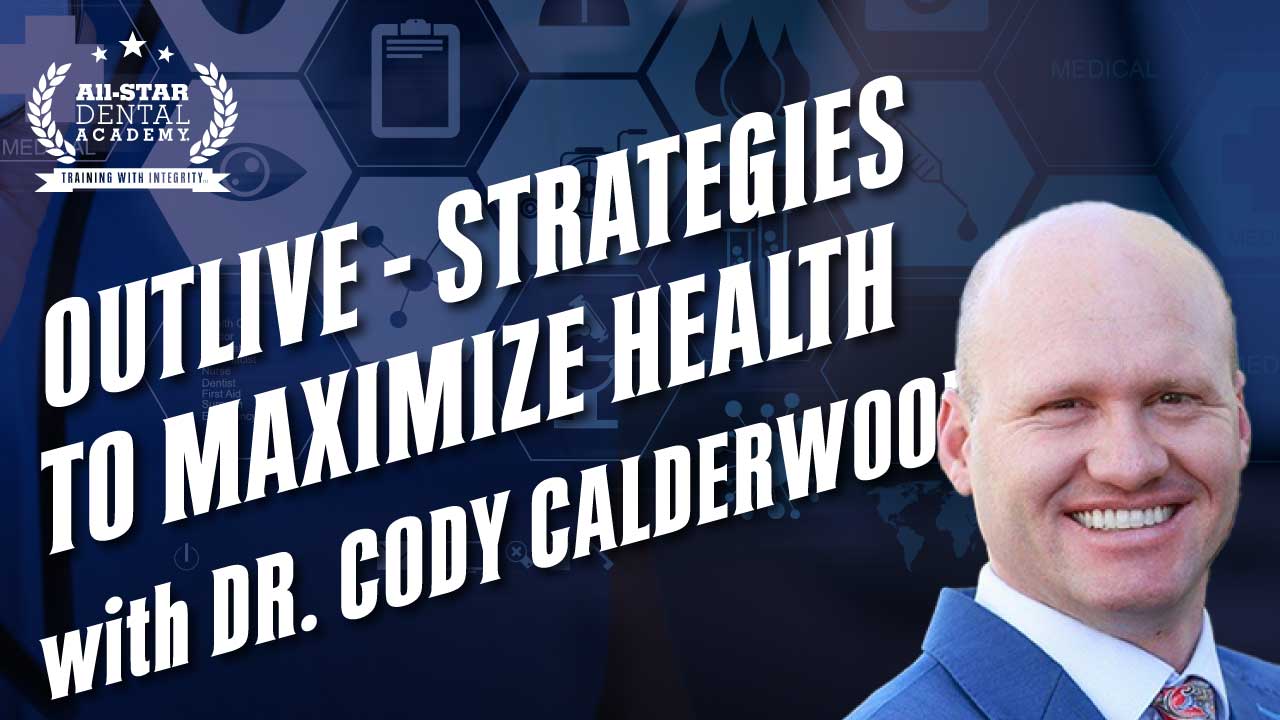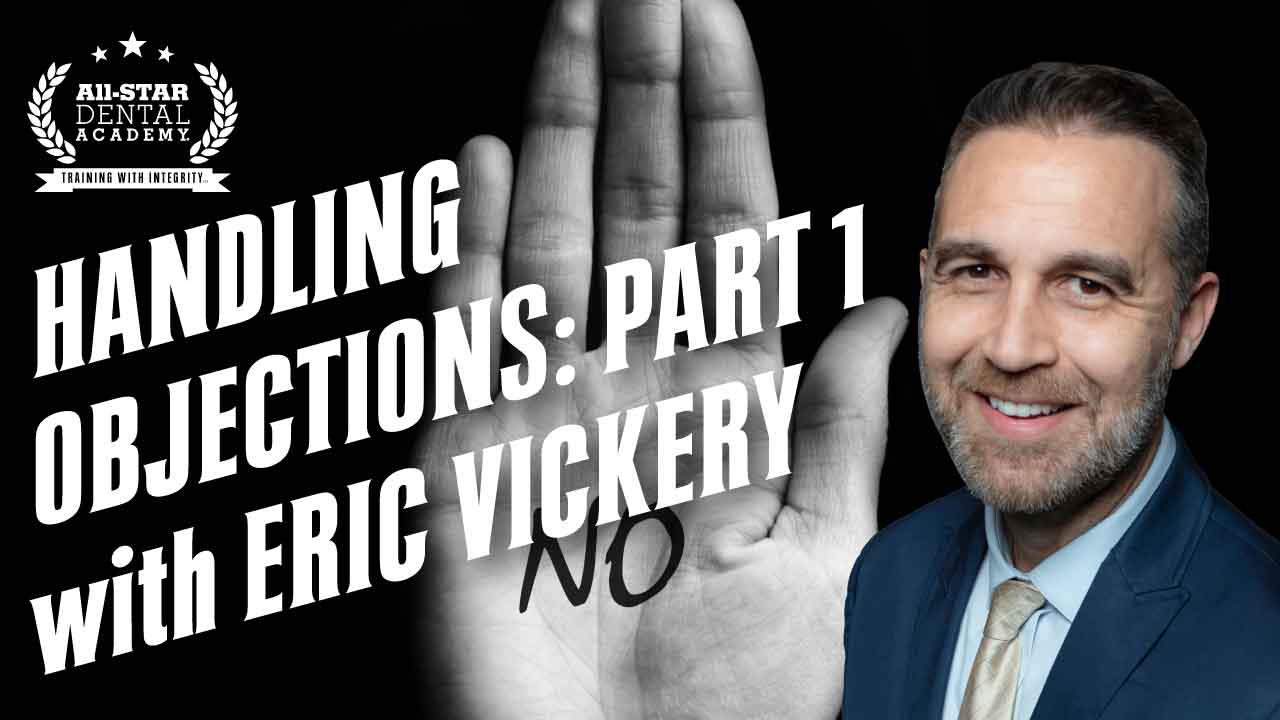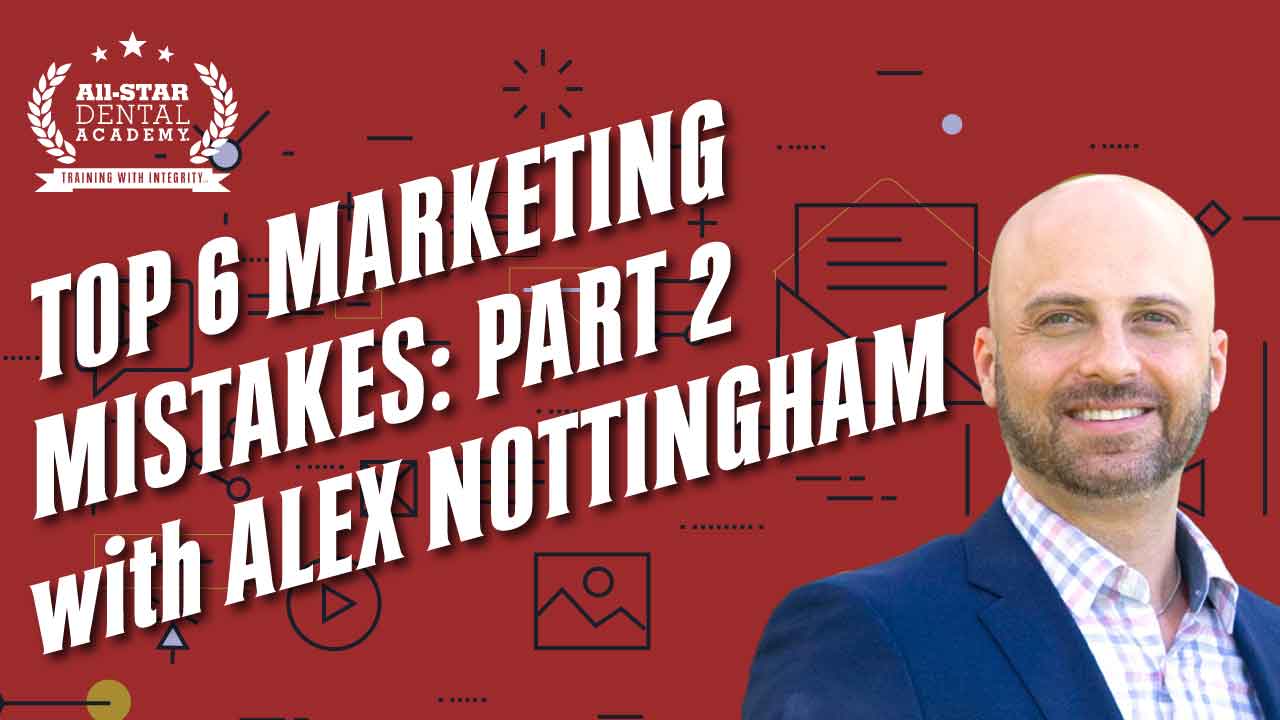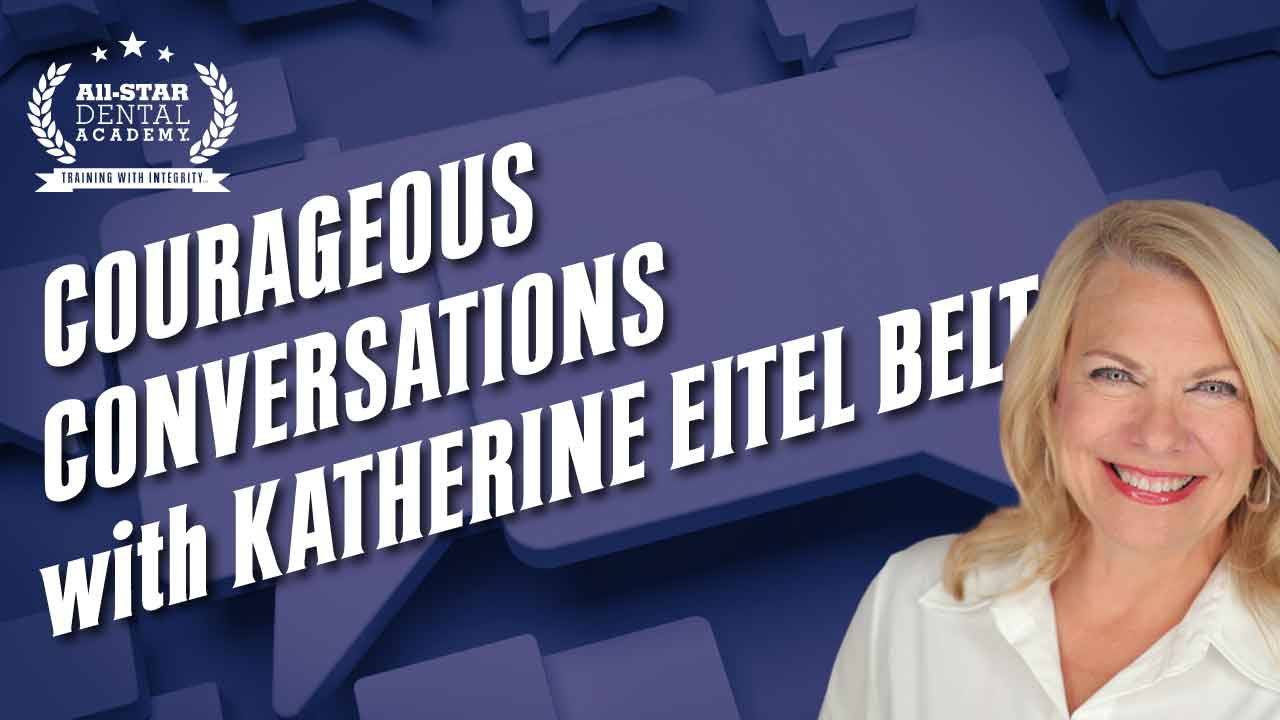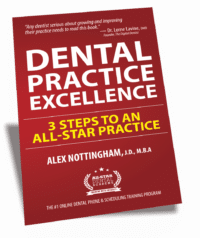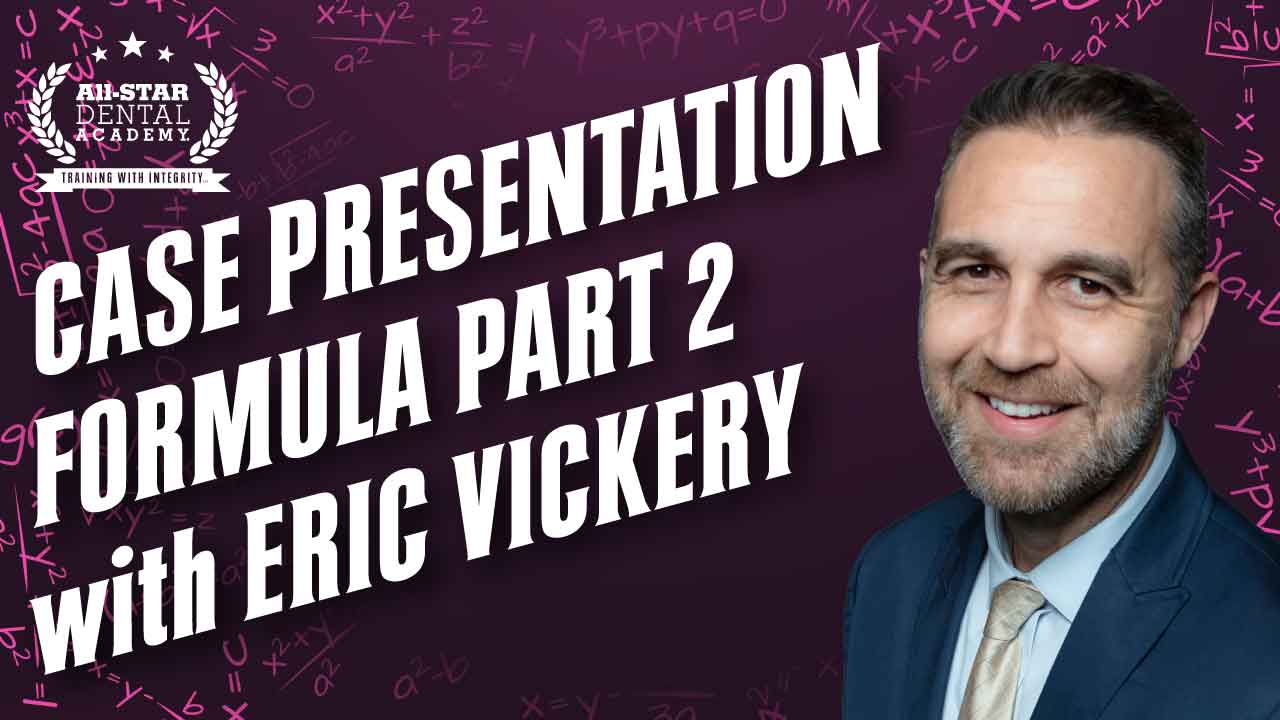Eric Vickery, President of Coaching, is interviewed by Alex Nottingham, JD, MBA on Dental All-Stars to discuss the DISC profile and its significance in effective communication with dental patients. DISC is a simple yet powerful tool that helps customize communication based on individual personality types. By understanding how people prefer to receive information, dental professionals can enhance their communication skills and improve patient experience. The episode delves into the four behavioral styles represented by the DISC profile: D (dominant), I (influencing), S (steadiness), and C (conscientiousness). Each style has distinct preferences and fears, and tailoring communication accordingly can lead to better patient rapport and increased case acceptance. The episode emphasizes the importance of self-awareness, understanding others, and adapting communication styles to create a comfortable and effective dental environment.
Resources:
About Eric Vickery
Eric holds a degree in business administration and brings a strong business and systems approach to his consulting. His initiation into the field of dentistry was in the area of office management. He managed dental practices for over ten years and has been consulting over 250 offices nationwide since 2001.
About Alex Nottingham JD MBA
Alex is the CEO and Founder of All-Star Dental Academy®. He is a former Tony Robbins top coach and consultant, having worked with companies upwards of $100 million. His passion is to help others create personal wealth and make a positive impact on the people around them. Alex received his Juris Doctor (JD) and Master of Business Administration (MBA) from Florida International University.
Episode Transcript
Transcript performed by A.I. Please excuse the typos.
00:00
This is Dental All-Stars, where we bring you the best in dentistry on marketing, management, and training. Here’s your host, Alex Nottingham. Welcome to Dental All-Stars. We have Eric Vickery, president of coaching with me, and we are talking about the disc profile, an overview of disc. Eric, what is disc? That is the question. Disc has been around forever. I mean, even…
00:30
Socrates and Plato, these guys were talking about personality and characteristics and traits. I think the reason I love DISC so much is a very simple tool that anyone can use to help us learn how to communicate better with our patients. So it’s really a communication tool. And my favorite saying is you’re only as good as you can communicate. So however great you are clinically, how well can you communicate it? And DISC is a way to customize the way you communicate to that.
00:57
person’s personality type. Everybody likes to digest information differently. You’re a bottom line guy. You wanna get to the point. If I’m giving you all the details and all the fluff and all of that, you’ve checked out seven seconds in, right? It’s true. So it’s a way for us to understand how people like their information. It’s a way to improve our communication. And everybody knows the golden rule, treat people the way you would wanna be treated. But this is applying the platinum rule, which is
01:25
treat people the way they want to be treated. That comes from a book called People Smart. And first read that about 25 years ago now. And it was enlightening. It was a way for me to say, oh my gosh, you mean everybody’s not like me? Everybody doesn’t like a ton of words and a lot of fun and engagement in that way? No, everybody has a different way they process. So not only is it an identifier, but it helps you understand where you are. You cannot grow yourself if you don’t know about you.
01:55
So it’s a way for you to identify who you are and your style. That allows you to then say, okay, that’s my natural behavior style. Now let’s teach you how to be adapted behavior style. How do I get out of my box? How do I get out of my comfort zone to make you as comfortable as possible, right? Right. So that’s the three levels. That’s know yourself, take the disc profile system, know thyself. Then it’s, do I understand how to identify other people’s styles, which we’ll talk about?
02:23
And then level three is how do I adapt who I am to meet them where they are? And when you do this really well, people like being around you more. People listen to more of what you’re saying and therefore you’re more effective in your communication, which for us means more case acceptance. And I love it. It’s a four square grid. It just has a top bottom left and right four squares. Very simple. In the top left corner, it’s got D dominant style.
02:52
So if you were to profile on your disc profile, it’s not a test because there’s no pass or fail, it’s a disc profile, and it were to tell you, hey, you’re mostly in this square, this section, this sector, then that would tell you you’re an extroverted teller who is task driven. You wanna tell people what to do. That’s a D dominant, right? D dominant style. These are people who want the bottom line. So think extreme examples, people who test really high on this.
03:21
think Simon Cowell, just bottom line, we’re not getting into your feelings, we’re just telling you this is the truth, this is the task, boom, boom, boom. Most people aren’t that extreme. They have a moderate level of D personality style and they’re about being on time, they’re about making sure that things are getting done and it’s getting done efficiently. The number one thing to remember when you’re communicating with your patients, so if you were able to identify your patient as a D style,
03:50
the number one thing they want is to be in control. This is the patient that calls up on the phone, new patient says, I just need a cleaning. I haven’t seen the dentist in six years, I just need a cleaning. Can I get my teeth cleaned? And we have teams saying, well, no, we don’t do cleanings here first in our office. You have to see the doctor for a comprehensive exam first, which then starts to make the D feel like their biggest fear, which is manipulation. Oh, so you’re trying to get my money before you’ll clean my teeth. So if you don’t.
04:19
know how to communicate this really well to the D personality style, you could run into a brick wall. Does that make sense? Makes sense. Okay. And also, can I put this in the show notes as well, the PDF? Yeah, for sure. We can, we can actually put this on there. Yeah. This is a, this is my one page. So anybody that goes through coaching and they go through disc, what we have them do is every team member takes their disc, they know thyself, but then we’re teaching them how to identify others by using this page right here. And then there’s some quick.
04:47
links on here on how to treat these people. So be on time, let them feel in control, give them the bottom line, limit your facts, respect their time. This is the direct person, okay? This is the person who’s listening to the podcast in 1.5. That’s me. Yep, you’re listening to the podcast in 1.5. Boom, how fast can I listen to this? Okay, I just wanted to download the data. That’s right. But other people, opposite of that, the S’s and the C’s, they like the details.
05:14
They like all the information. I’ll get to them in a moment. They’re listening in the one speed. They’re pausing. They’re taking notes. So we’ll get to them. On the same top of this grid, so that’s top left corner for those listening, that’s a teller who’s at the top, but also on the left side task driven. Also on the top, telling extroverted is the eye influencing, but they’re on the right side of the grid, opposite the D on the right, and that’s people oriented. This is, think Will Ferrell.
05:43
Okay, this is the extreme example, very outgoing, very expressive, talkative. They’re just really, really out there with their words. Okay, now the important thing to know about the eye is what do they want? They want recognition. Their fear is to be indifferent to them or to be ignored. And so the eye patient who walks into the office in the reception area and you’re on the phone talking to someone and they’re like, hey, they’re trying to interrupt your phone call right away before they even realize what’s going on. And you put your finger up and say, not now.
06:12
This would be their biggest fear. This is something that causes that rejection that causes them to feel not comfortable, not this place of home for them. Whereas if they walk in and you go, I’m gonna be right with you, so good to see you, right? And now you’ve given them this pause button that you can work with them on. They’re mostly interested in how great it looks, okay? How great does it look? They’re not trying to tell you what to do, they’re trying to tell you about themselves. Their favorite question to ask is,
06:43
What do you think about me? Make sense? It does. OK, so that’s the D’s and the I’s. Those are both extroverted tellers on top of the grid. Now down the bottom right corner, this is the steadiness group. This is Winnie the Pooh. This is Mother Teresa. They’re people oriented, but they’re askers. They’re introverted. This is the harmony group. The number one thing they want is harmony. Their fear is conflict.
07:08
This is in fact the biggest group, the highest population we’re going to deal with as patients go in dentistry is in this group, which is great because they don’t want a toothache. They don’t want to lose a tooth. So communicating them really about maintaining health is important. This is for the S’s or the S’s and C’s? S’s only, steadiness. S, okay. Yeah. They want harmony. They want to avoid conflict. The number one thing they want is harmony. Their biggest fear is conflict. So they’re going to need some hand holding. They’re going to want to know what’s going to happen if they don’t do something.
07:36
These are great people to present the 95-5 rule, the condition to, right? Here’s what’s happening, here’s what’s gonna happen if you don’t do anything. They don’t mind the details, they’re gonna want some hand holding, they wanna feel comfortable as they move through the process with you. They’re gonna ask questions, they’re introverted askers. But they’re people oriented. They want everything to feel good, everyone to get along. These people will eject from your practice if they sense any sort of conflict amongst your team, if the doctor didn’t.
08:05
treat the team well during the appointment, they’ll just leave quietly. You’ll never hear from them again. They’re not gonna go do a review. They might tell some people about you because they’re people oriented, but they’re not gonna go do a review online. Okay, makes sense? Okay, so we did the D, which is the top left of the corner, because what I’m thinking is in the graphic, if somebody’s just looking at the graphic, because that’s what you’re showing here on the screen is a graphic, is the top left is D, which is they tell
08:35
Okay, and they’re task oriented. And then the top right is extrovert, just like the D, but they’re people oriented, not task driven. Now you’re at the bottom right quadrant, which is people oriented and introvert. As the S, steadiness, yep. Steadyness, okay. Yeah, and lastly, the C.
08:59
which is the bottom left. Bottom left corner, which is also like the S and that they’re asking introverts, they like to do research. These are the scientists, this is Albert Einstein, okay? But they’re task-driven, they’re not people oriented, they’re task-driven, so the questions they’re asking are typically things online, they’re reading, they’re doing research, et cetera. So this patient is looking for the facts, they’re wanting the accuracy. In fact, the number one thing they want is accuracy. Their biggest fear.
09:26
is to be criticized for making the wrong decision. So you’ve probably heard the saying analysis paralysis. This is the reason for that quote, right? Because they’re left brain analytical, they’re doing the research, and they wanna make a perfect decision, which doesn’t exist, there is no perfect choice. And so it sticks, they get stuck in that role. So your patients here will say, I need to go home and think about it. We’ve heard this before, expect them to do that.
09:55
Give them a lot of research. Use phrases like, you know, we’ve done this procedure successfully thousands of times and the most accurate way for us to take care of this is to make sure that we precisely handle it this way. You hear those key words I’m using, they love that. So if a patient wants to think about it and they’re clearly a C, that’s not a bad thing? It’s not a bad thing. You just gotta be prepared for it, to do a virtual followup, to have them back for a consultation. You always wanna schedule a next step with them to help them along with making the decision.
10:26
You also want to make sure they understand the consequence of not moving forward from a time standpoint without pressuring them. They feel pressure. It’s like a computer crashing. It just shuts down. It just doesn’t exist anymore. They’re just unplugged. They’re out of it. And so you got to walk that fine line of helping them educate them, but helping them understand that the research shows here’s what’s coming if you don’t take care of that cavity. It’s a toothache.
10:54
They’re going to want to go home and do research, say, how many cavities turn into a toothache? A hundred percent of them. The question is when, and they’re going to ask you, when do I need to take care of this by? And our joke we say is, well, the day before it hurts. You got to take care of it the day before it hurts. Now it helps them to realize, oh, that’s right. I need to take care of this. So if you find out, Alex will use it as the example, when you take your disc profile, you find out that you’re a D-style. That means you’re teller, you’re telling.
11:24
your tell style, your task driven. So you’d like to tell people what to do. That’s a comfort zone for you. We find this out as, how do we do this? Well, I ask myself two questions about you. The outside of the grid helps me determine your disc. So anybody listening, if you’ve never taken the disc profile before, you can take it right now with two questions. You can say, Alex, are you more telling extroverted, or are you more asking introverted? And how would you answer that question? Telling extroverted. Yeah, you’re a teller.
11:54
There’s nothing wrong with that. That’s just where you are. Yeah, my disk is DI. It’s a little bit more D than I. I’m pretty balanced in the D and the I, but almost no C and S. It’s just gone. It’s like a typical bodybuilder. All upper body, no lower body. So the second question, the first question’s answered pretty obvious, telling extroverted. Now, are you more people friendly or are you more task driven, would you say?
12:21
Yeah, you’re going to fall on that task. And you heard the hesitation there. You’re slightly more D than you are, and you’re people directed. And here’s the thing. When we teach this to teams, this is level one when it comes to leadership training. We do this leadership training. We have three levels of coaching that we do. Disc is level one understanding. You’ve got to understand people. You’ve got to understand who you are. You’ve got to understand your baseline. And this is a foundation for that. Next level is strengths. What are your talents? We use Gallup Strength Finder for that.
12:50
understanding what you are as a leader and what your team is in strengths. And level three is EQ, your emotional intelligence. Now, what you all heard in that hesitation of Alex was, oh, I like people though. That’s being aware of your emotional intelligence. And so actually what we’re asking you to do is be aware of yourself, right? Self-awareness, know how to manage yourself. Yep, exactly. Manage yourself and then relationship management. Hey, I’ve got a weakness, right?
13:19
I’ve got lacking in the S and C category. How do I step that up? Either you follow the Gallup mentality and say, I need an S around me. I need a person next to me who has that compassion, who has that empathy in the S category to help soften that for me. Or C, details. Maybe I just get a little bit of data and I go for it. Your attorney side of you gets the data. So being more emotionally in tune with yourself allows you to be very well balanced in all of these.
13:49
And the more you know about this, the more you can start to adapt to others. So when you think about those three levels of application I discussed, number one, know thyself. Number two, be able to identify others. Use this four square grid to simply identify others. Level three, be able to adapt to their style. Now Alex, which of the four squares would you have the hardest time adapting to? C. So in your mind, it’s C.
14:17
There’s a lot of details in here. That seems complicated. Don’t give me so details. Just make a choice. True. I think that would be a challenge for you, as well as the S. Typically, it’s the diagonal. The S would be a problem, too. What’s an S? What are the characteristics of S? Steadyness, harmony. Think Winnie the Pooh. Very soft, needs hand holding, wants you to spend time with him. Oh, I don’t like that idea. Quality time. No, no, no. That’s not your comfort zone, right? So imagine a tug of war diagonally. I think you’re right. Now that you explained it to me.
14:46
Now that you explained it to me, at least with C, it’s not, it’s like the data. You have the task. It’s there. It’s a task. You’re connected that way. It’s not my favorite thing, but now I have to coddle other people. Then S, that could be draining. So if you look at it this way, you see how the Ds and the I’s have something connected, the extrovertedness, the tellingness? You see how the Ds and the Cs, the connectedness is the task-oriented side?
15:16
The D’s and the S have nothing connected. There’s no people to the D. There’s no introverted asking to the D. So that’s why that’s the biggest leap. And same goes for me. I’m an I, okay? So I’m extroverted people. The biggest leap for me is C. Imagine a tug of war diagonally across the four square grid, right? If you’re high I, you’ve got to be low C.
15:40
But if this tug of war, if you can work on your adaptive behavior, you can actually pull that tug of war. You can give in and let go of it and allow the C to take over. This is where I have to be, Alex, I have to be C compliant when I’m meeting with doctors and going over KPIs with them. I’ve got to get into the details. I’ve got to slow down a bit. I’ve got to give reasoning as to why that number is low and what’s the task orientedness of how to get that number taken care of. Does that make sense? It does.
16:08
So I’ve actually taken the test. I have three chapters of DISC. Very, very early on, I was the highest you could test as an eye with zeros in all other categories, DCS. They were all zeros, okay? I was Will Ferrell on steroids, okay? Once I realized that’s how I was coming across, now this is me at 20, let’s see, 23 years old when I first took this, okay? Managing a practice for my father-in-law and I realized, whoa.
16:37
I’m too much for people. Now I can cut loose with my friends and be outgoing and let that fly in a social setting, but at work, I’ve gotta soften this. So second chapter was, I became ID. I need to make sure I’m getting stuff done. I need to make sure it’s not just all fun and games, but we’re accomplishing something. And then my third chapter of taking this, I became an IC. An IC is, hey, I can have fun while we get into the details. And that’s been my evolution. So…
17:05
You can tap into the S, but it takes emotional intelligence to get there. I will tell you this, S is my weak point. My wife says compassion should be your middle name because you have none. It’s a good reminder to make sure you get that empathy up, Eric. You get that compassion going. It’s not all fun and games. It’s not all business. There’s people attached to this. And I got to remember that. That make sense? Yeah, well, your S is a different level than my S. You’re the Dalai Lama.
17:35
of S’s when it compares to me. But no, I, I, I realize from an emotional intelligence standpoint, it’s something I work on meditation. I do a lot of work on myself to balance the heavy D the D and then I guess a little bit of the C can be very draining. It can be very lonely and I do love the eye. I do love people. They, they inspire me. Um, but it is softening, slowing down. Those are the, like, you know, you’re building a recipe.
18:05
and I’m already really hot as it is. So you gotta put in other spices, it’s gotta cool down. So I recognize a way to balance it in general. But if I’m stuck on D, it’s gonna be hard slowing down. Yeah, yeah. And- Go ahead. No, I was just gonna say that this is just the tip of the iceberg. I just would like everybody who’s listening to just get a sense. I’m sure some have heard a disc, know a disc very well. Many others have no idea what you’re talking about.
18:35
So at least this gives an overview. We talk a lot about disc at our live events. It is a bit more, it seems simple on the surface, but then the next level is how do you apply it? So it’s understanding who you are. How do you use it to grow as a person? How do you use it to interact with your team? How do you use it to interact with your patients? And like you said, then you’re going even deeper on your strengths and then ultimately emotional intelligence, knowing yourself.
19:02
relating with other people and so on. And that’s the ultimate goal of success, the ultimate objective is it is personal development. When we get right down to it, EQ is a greater predictor of success, that’s emotional intelligence than IQ. EQ is the place of personal development because you’re developing as a person. We are emotional creatures, even the high Cs and high Ds that don’t
19:32
seem like they care for people, they’re still, their D’s and C’s are their protective mechanisms from being hurt by people. It’s safe because I control things this way through and each of these can have its own and that’s interesting too. We can get into it another time, but each one of these D, D, I, S, C, they have their dysfunction and their way of protecting mechanism. So you can use these analogies to go even deeper.
19:59
We had one mastermind group, which was fun. And we were looking at the Enneagram and there’s Eric taking the Enneagram and comparing it to disc. So all of these relate. Yeah, yeah, for sure. So I’m gonna stop it here just because it’s a lot for everybody to cover and I’ll give you one last thing to say. Yeah, I wanna make two points, just echoing what you’re saying. There is no wrong. If you test, there’s no wrong. There’s just different. I, S, C, doesn’t matter. There’s strength and beauty in each of these. The second thing is to understand there’s different applications for this.
20:27
So when we coach this and we teach this at the All-Star Mastery Series programs, it’s disc with patients. So it helps with your communication with your patients, but it’s also disc with team. How do we create a better culture, a healthier culture to understand, oh my gosh, I’m here and you’re there. Now I know how to relate to you better. Now it will create, it’ll become a communication tool. So I can go to Alex and say, Alex, I need you to do me a favor. I need you to take your D hat off.
20:52
I need you to get your S hat on and go talk with this client right now, because they need you to meet you, meet them where they are. And you don’t take offense to that. You’re now able to get into emotional intelligence. You’ll be able to get into adaptive behavior. You can do that for small lengths of time, not forever, but you can do that. Thank you, Eric. President of coaching at All-Star Dental Academy, Eric Vickery. Thank you again. For everyone listening, please remember to
21:22
Follow us on Apple Podcasts and Spotify. You get the episodes as they are released and share with your friends. And until next time, go out there and be an All-Star. We hope you enjoyed this episode of Dental All-Stars. Visit us online at allstardentalacademy.com.




